I flew on the world's cheapest private jet that charters for $3,000 per hour and seats 6 see inside the Cirrus Vision SF50
Taylor Rains

Taylor Rains/Insider
- Private charter company VeriJet flies the $2 million Cirrus Vision SF50 jet for $3,000 an hour.
- CEO Richard Kane told Insider he prefers the single-engine aircraft because of its reliable safety and performance.
VeriJet is a charter company born in late 2020 that exclusively operates the world's first single-engine private jet — the Cirrus Vision SF50.
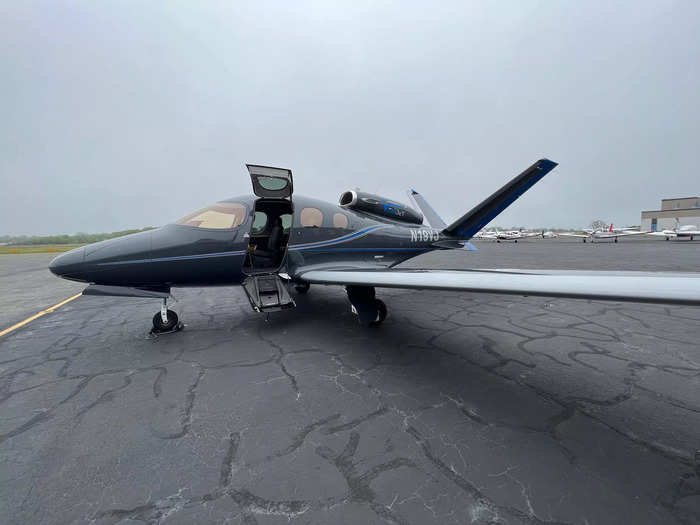
Taylor Rains/Insider
The company started with three planes, but in two years has expanded to 40. VeriJet has also built a crew of 18 skilled pilots in under two years. To be hired, the aviators need 1,500 hours of flight time and an Airline Transport Pilot certificate.
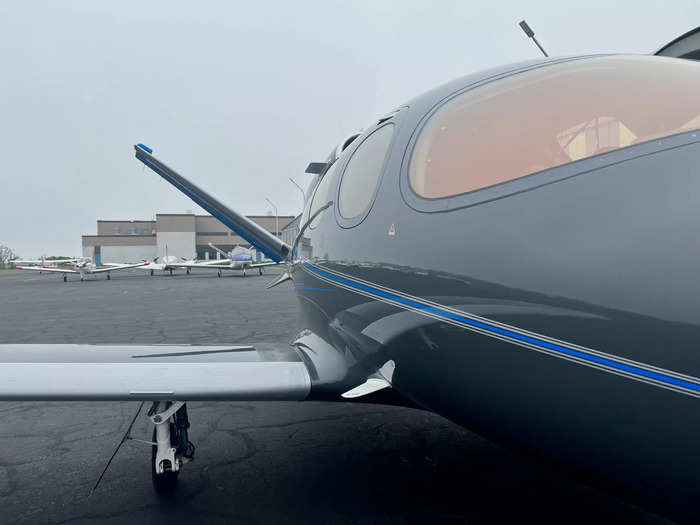
Taylor Rains/Insider
The Cirrus SF50's safety and high efficiency are why the company chose the single-engine business plane, VeriJet founder and CEO Richard Kane told Insider.
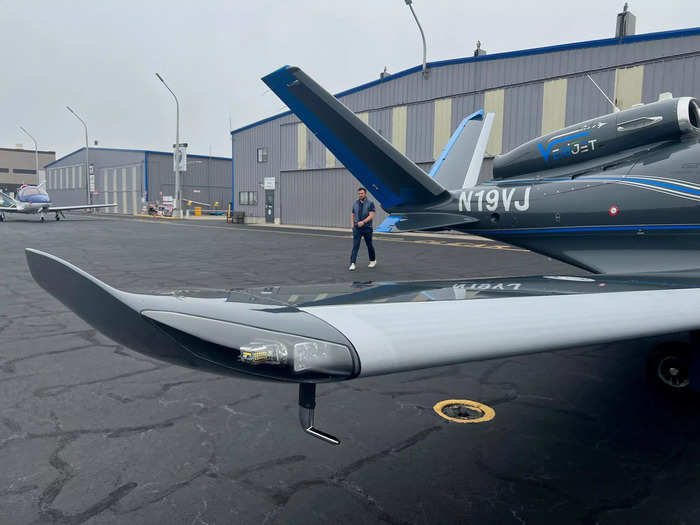
Taylor Rains/Insider
With a list price of $2 million, the SF50 is the cheapest private jet on the market, but, despite its low cost, the plane does not skimp on comfort and performance.
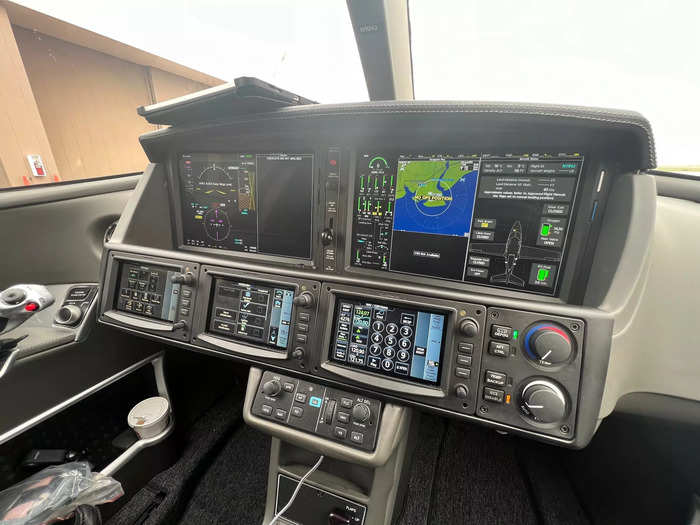
Taylor Rains/Insider
According to Kane, the SF50 can fly at Mach 0.53 and has a range of 1,277 nautical miles (1,470 miles). This means it can easily connect small cities in the US that commercial airlines can't.
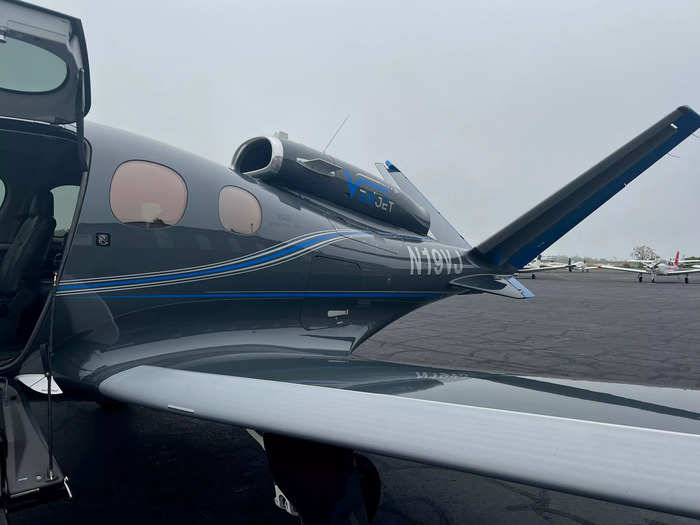
Taylor Rains/Insider
This is because major airlines typically fly to a central hub before continuing on to smaller markets, like Huntsville, Alabama, or Cody, Wyoming. In fact, Kane told Insider that one of his customers lives in Tuscaloosa, Alabama, which is not served by any airline.

Delta Air Lines Embraer 170 regional aircraft. Taylor Rains/Insider
Instead of driving an hour northeast to Birmingham and flying out via a hub, they use VeriJet to travel directly from Tuscaloosa to their destination. Moreover, the client can fly out to a meeting and back on the same day.
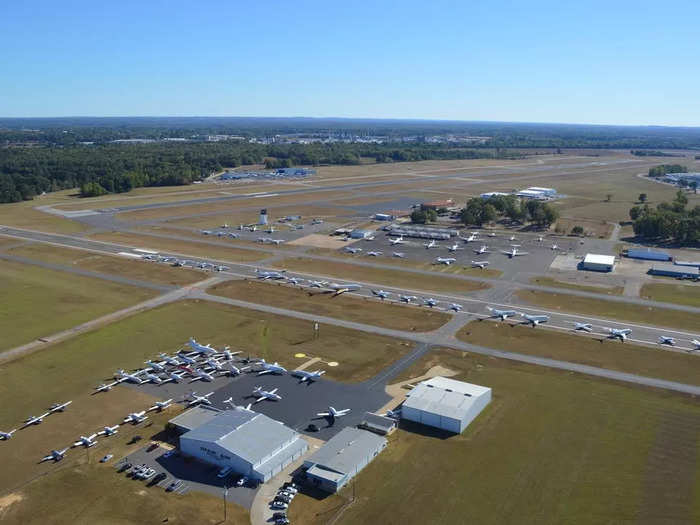
Tuscaloosa Airport during University of Alabama football games. Tuscaloosa Airport
Kane told Insider that VeriJet charters cost $3,000 per hour, but that is lowered to $2,750 with the company's jet card when the buyer commits to 100 hours.
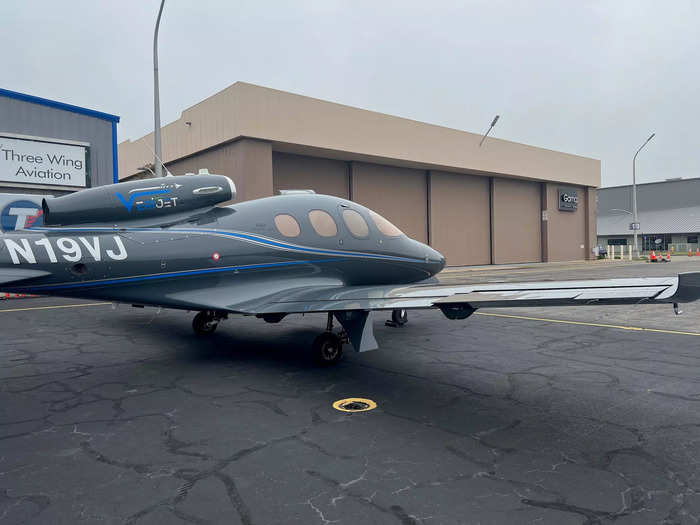
Taylor Rains/Insider
While VeriJet may be more expensive than flying commercial, those that can afford it find the convenience and time saved worth the money, according to Kane.
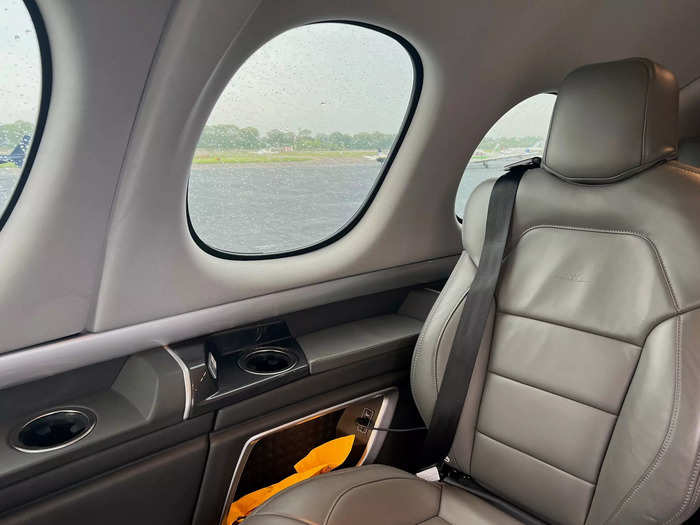
Taylor Rains/Insider
Insider took a demo flight on one of VeriJet's Cirrus Vision SF50 Jets with Kane as the pilot to see what passengers can expect — take a look.
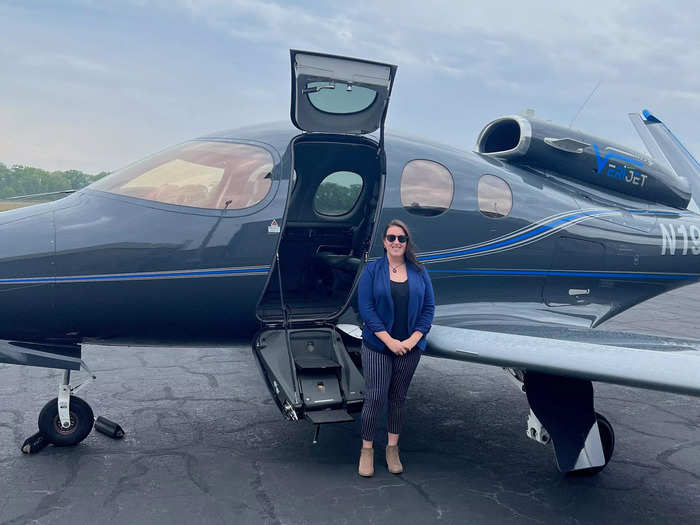
Taylor Rains/Insider
I met up with the CEO at Sikorsky Memorial Airport in Bridgeport, Connecticut, on Friday for the demo.
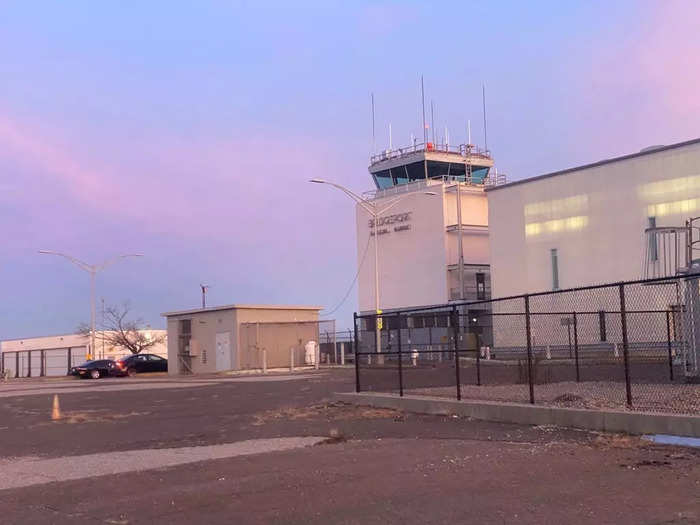
Bridgeport Sikorsky Memorial Airport in Connecticut. Taylor Rains/Insider
We departed out of Three Wing Aviation, which is one of the airport's fix-based operators (FBO) that provides things like fuel and maintenance to general aviation planes.
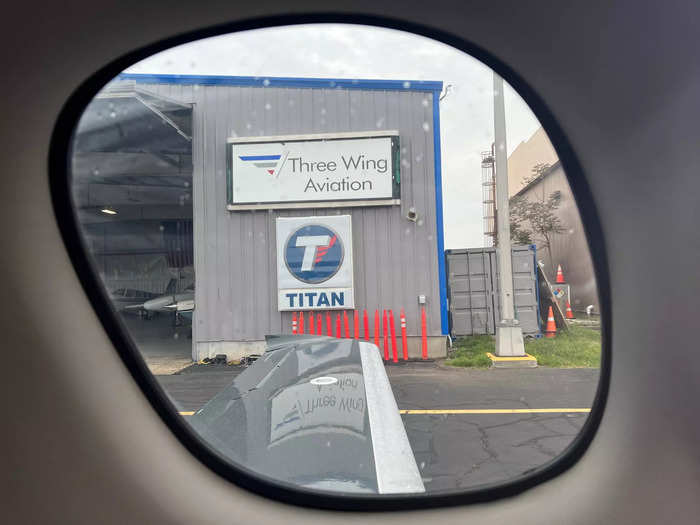
Taylor Rains/Insider
When I arrived at the airport, I did not have to go through security or have any of my belongings checked before boarding, which is a nice perk of flying private.
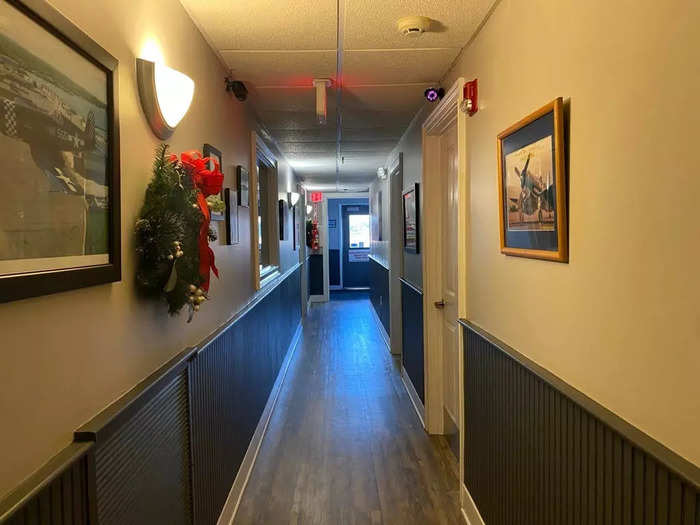
Inside Bridgeport Sikorsky Memorial Airport in Connecticut. The hallway led from the entry directly to the ramp. Taylor Rains/Insider
I met Kane on the ramp of the FBO where he gave me an exterior tour of the Cirrus jet. I immediately noticed the unique paint job, which used dark colors and was easy on the eyes.
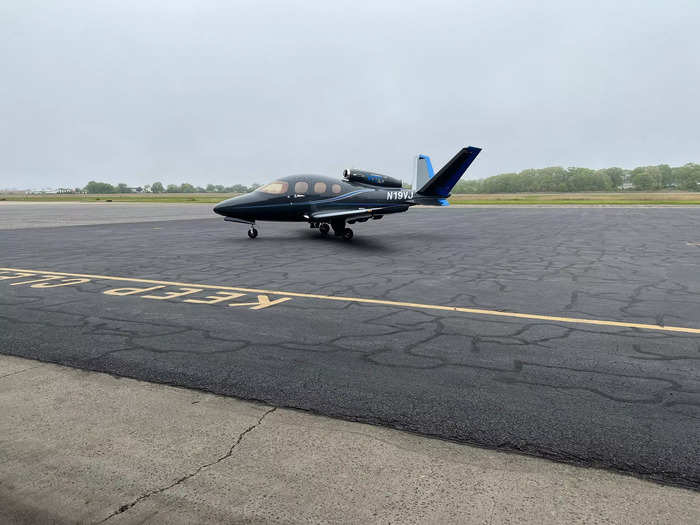
Taylor Rains/Insider
Walking around the plane, Kane showed me a few interesting features, like the infrared camera on the nose, which scans for wildlife or debris on the runway to avoid a collision.
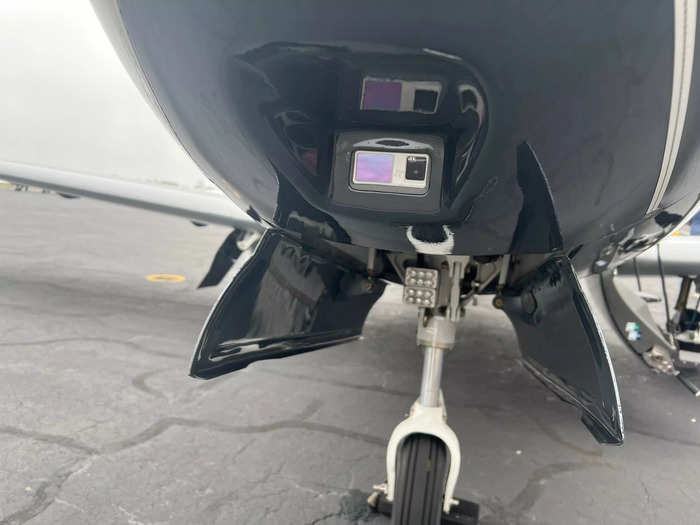
Taylor Rains/Insider
He also showed me the unique V-shape of the tail. According to Kane, the design uses turbulence-reducing technology to keep the flight smooth in weather or wind.
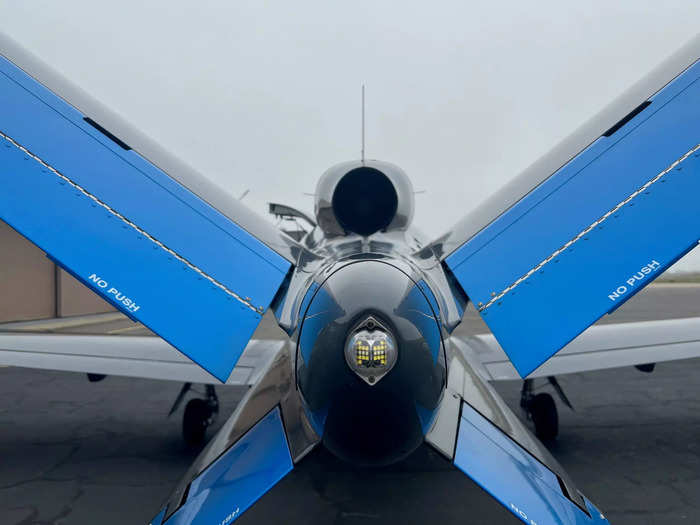
Taylor Rains/Insider
We also discussed the placement of the engine. Kane explained that the design makes the aircraft "bird proof" because the engine won't ingest birds, making the company's foreign object damage insurance "basically zero."
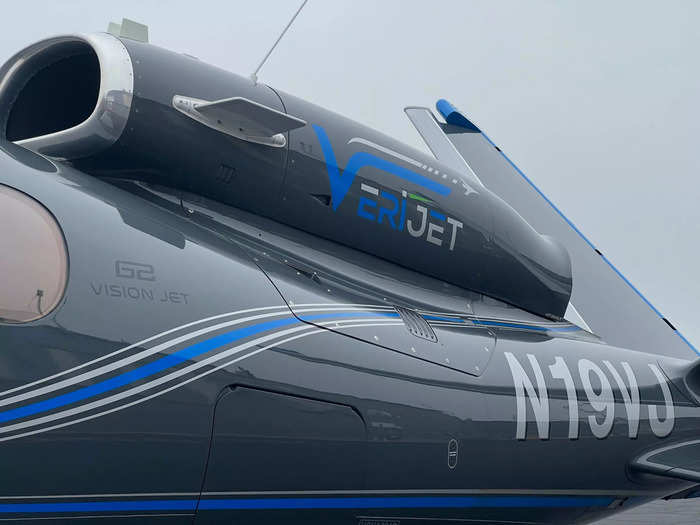
Taylor Rains/Insider
The engine also helps the plane to fly low and slow, reducing fuel burn and allowing the plane to get into airports that other private jets can't, like Santa Monica Airport in California. Biofuel can also be used for the engine, further decreasing the company's carbon footprint.
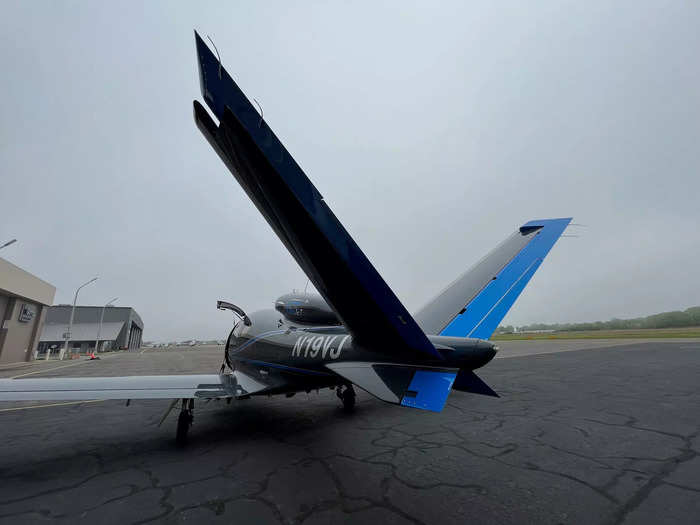
Taylor Rains/Insider
Kane emphasized that the single-engine is safe and that the system emails status information to the pilot after every flight, indicating if the engine is perfect or needs maintenance.
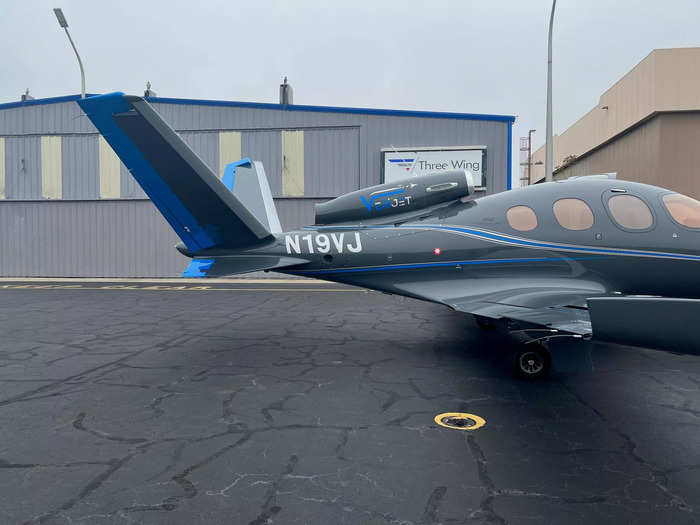
Taylor Rains/Insider
After completing the walk-around, we boarded the plane and I got to sit at the controls.
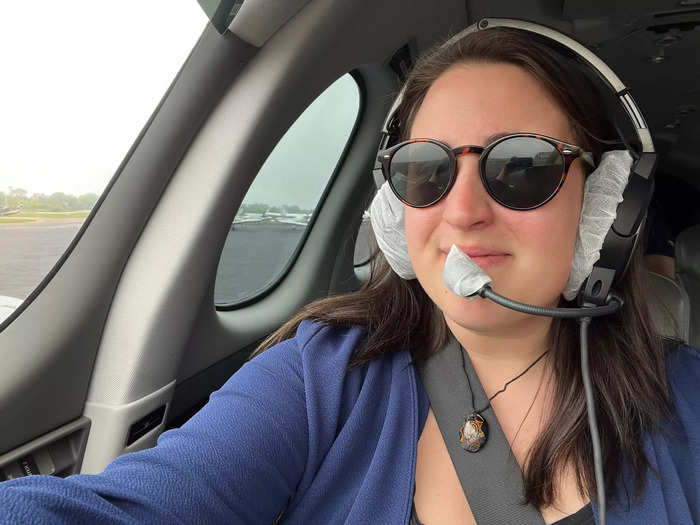
Taylor Rains/Insider
The displays were huge, and the touchscreen was extremely responsive, making it easy to input commands.

Taylor Rains/Insider
Kane could pull up airport diagrams, charts, checklists, and other necessary flight references with a simple touch.
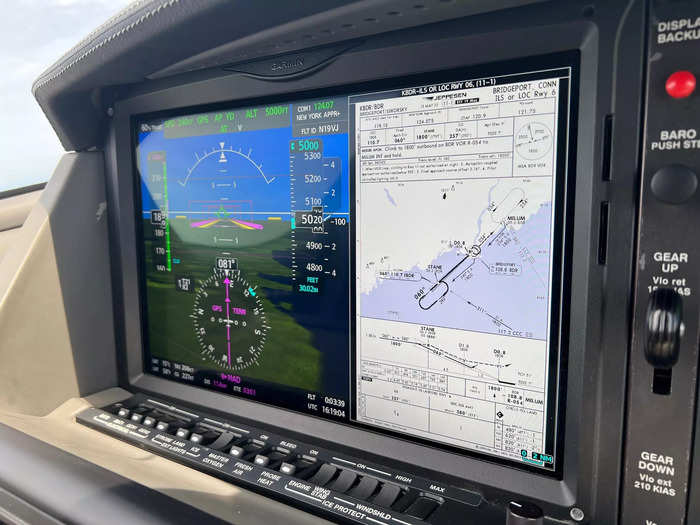
Taylor Rains/Insider
Also configured in the cockpit are systems backed by artificial intelligence (AI), which is one of Kane's biggest draws to the Cirrus jet.
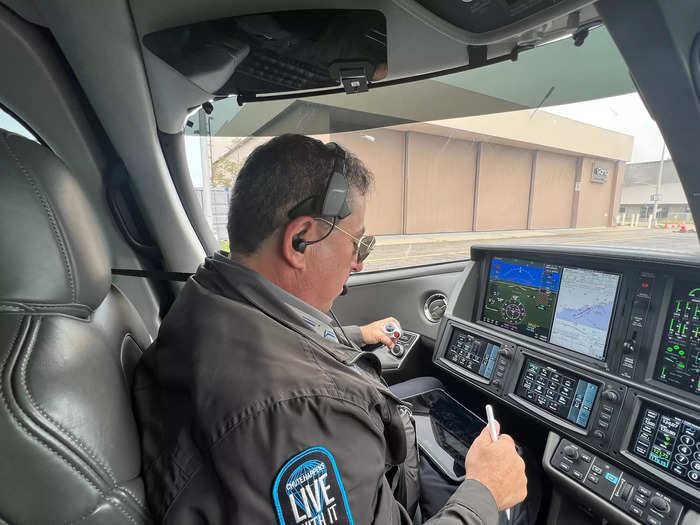
Taylor Rains/Insider
Specifically, he told Insider that the systems on the plane all work to prevent crashes that have happened in the past, making the plane one of the safest in the skies.
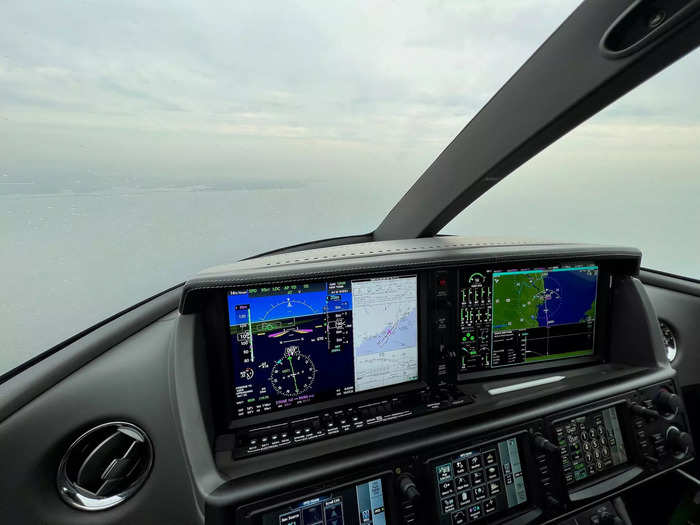
Taylor Rains/Insider
For example, when lining up for the runway, the plane knew our exact location at the airport and ensured we lined up for the correct runway given by air traffic control.

Taylor Rains/Insider
According to Kane, if we approached the wrong runway, the plane would give us a warning making the pilots aware of their position.
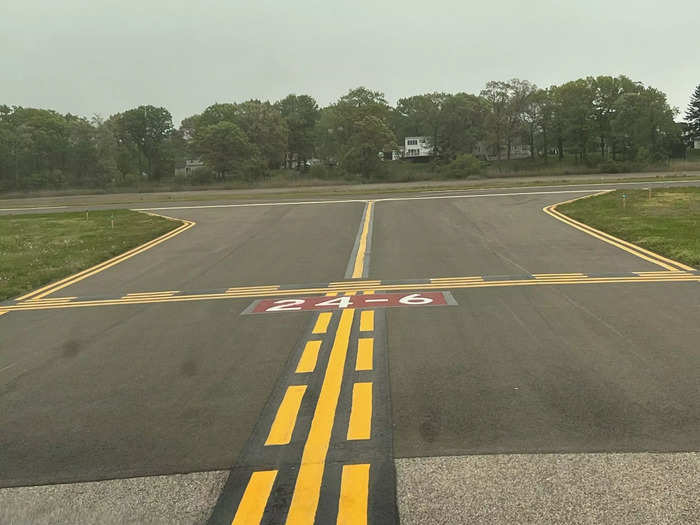
Taylor Rains/Insider
Once we were configured to go, Kane lined us up on runway six for takeoff. He showed me how to use the controls and, at about 90 knots, I pulled back on the stick and we were airborne.
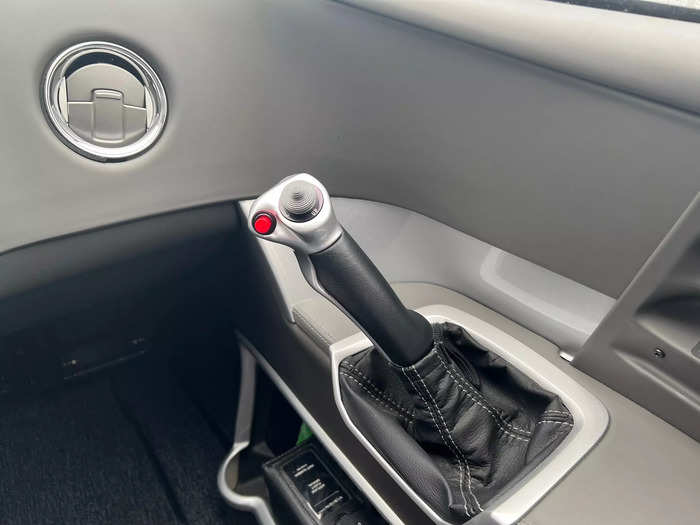
Taylor Rains/Insider
Kane then instructed me to pull up the flaps and landing gear, input the desired navigation, and press autopilot. The plane flew itself from there, which I found incredible.
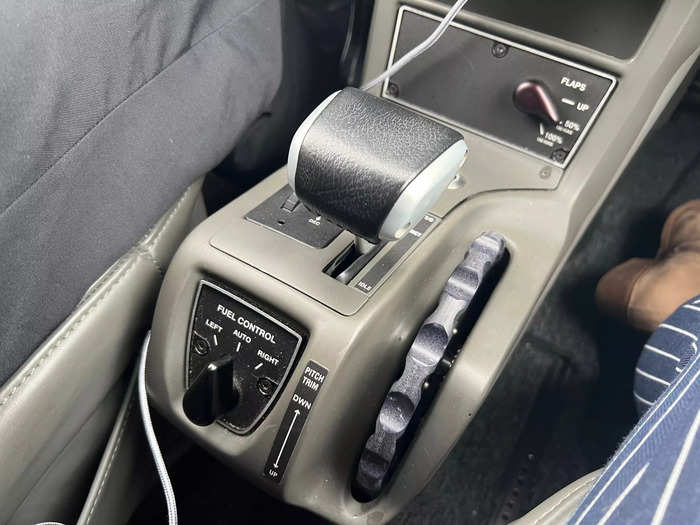
Taylor Rains/Insider
The system was extremely intuitive and clearly designed to enhance safety and pilot performance.
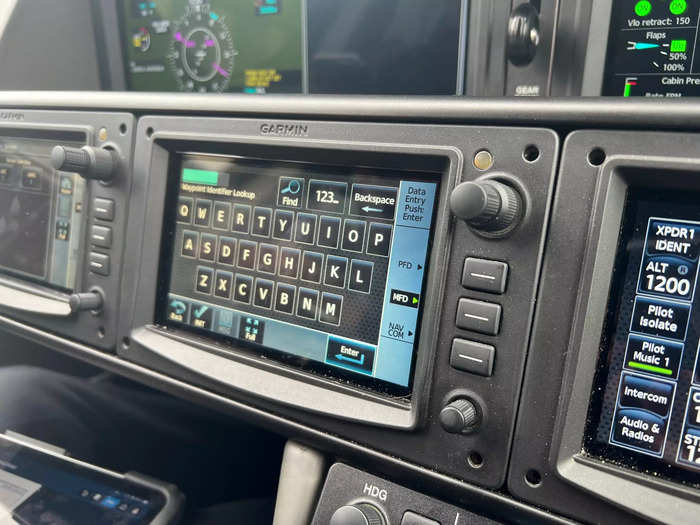
Taylor Rains/Insider
Shortly after takeoff, Kane showed me the plane's deicing system known as pneumatic boots, which are grooves on the wing that break down accumulated ice.
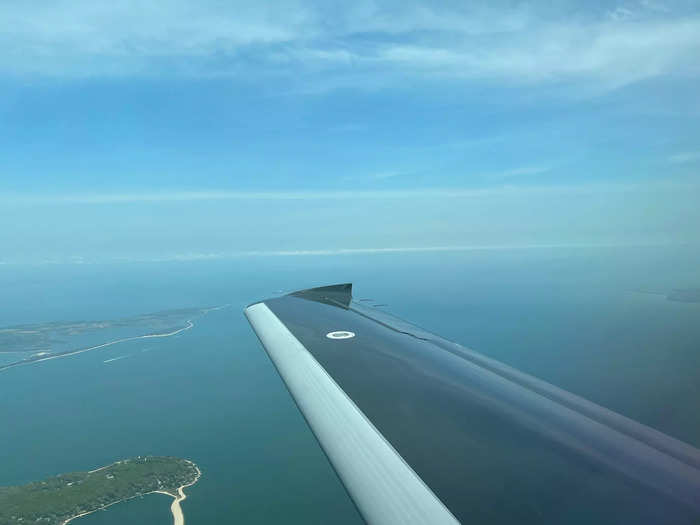
Taylor Rains/Insider
When Kane deployed it, the jet reminded him to also turn on the engine heat, which is the reliable AI backing Kane discussed before the flight.
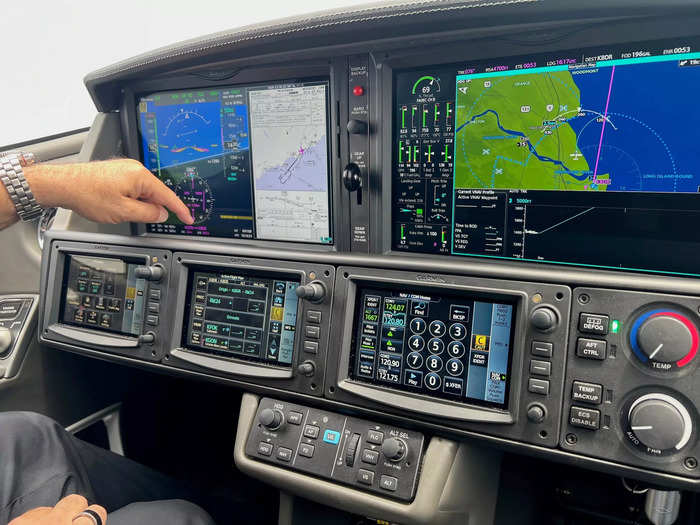
The display had yellow caution warnings and told him what he was being cautioned about. Taylor Rains/Insider
For the 30-minute demo, we flew from Bridgeport to Groton, Connecticut, then over Long Island, and back. We inputted the routing on the ground and got clearance from air traffic control before taking off.
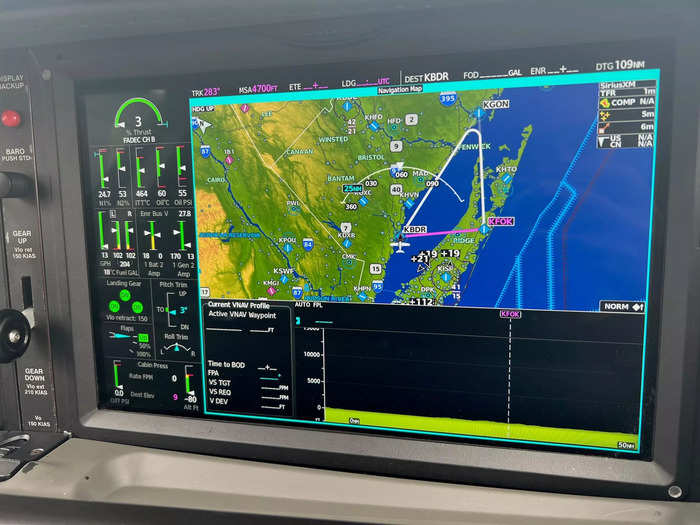
Taylor Rains/Insider
Throughout the journey, ATC gave us instructions to descend, ascend, and adjust our heading, which was all very easy using Cirrus' flight management system.
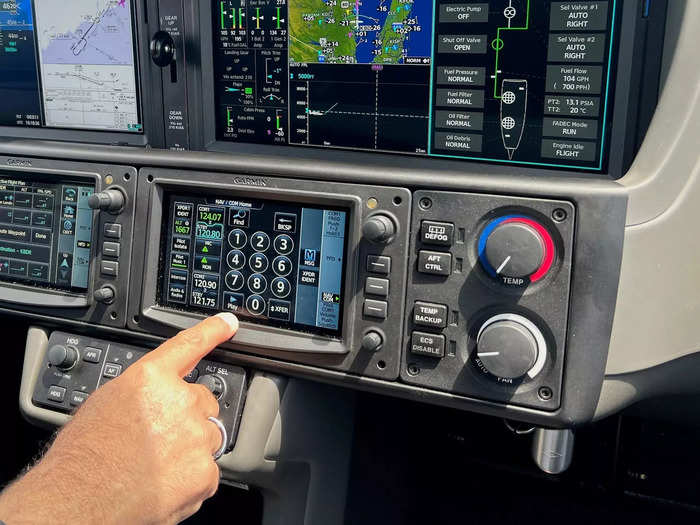
Taylor Rains/Insider
Flying at around 5,000 feet, we got great aerial views of the Long Island Sound and the communities around southern Connecticut.
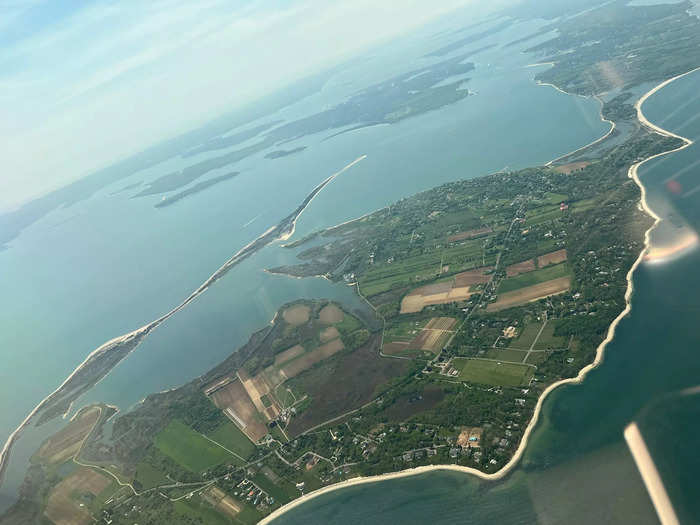
Taylor Rains/Insider
After about 20 minutes, we started preparing for landing, which was the most impressive phase of the flight.
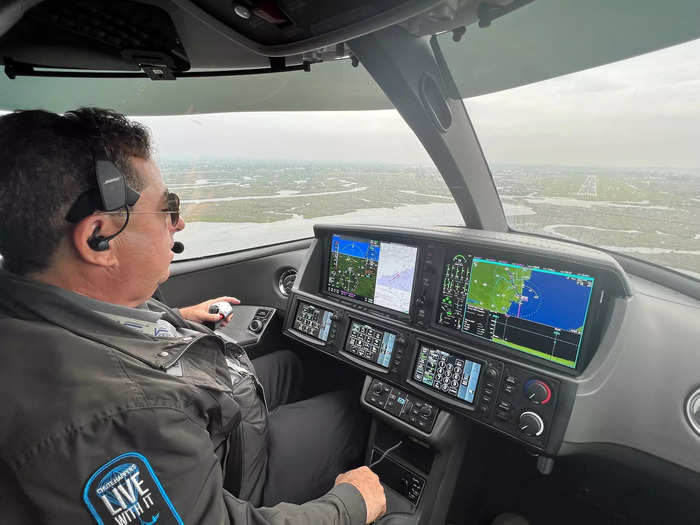
Taylor Rains/Insider
Kane configured the plane and we got the runway in sight, but the aircraft told us that we would be battling 19-knot cross winds during our approach.

Taylor Rains/Insider
In a regional jetliner, passengers could expect a bumpy ride, but, despite the gusts, I felt little to no turbulence as Kane easily navigated the plane to the runway.
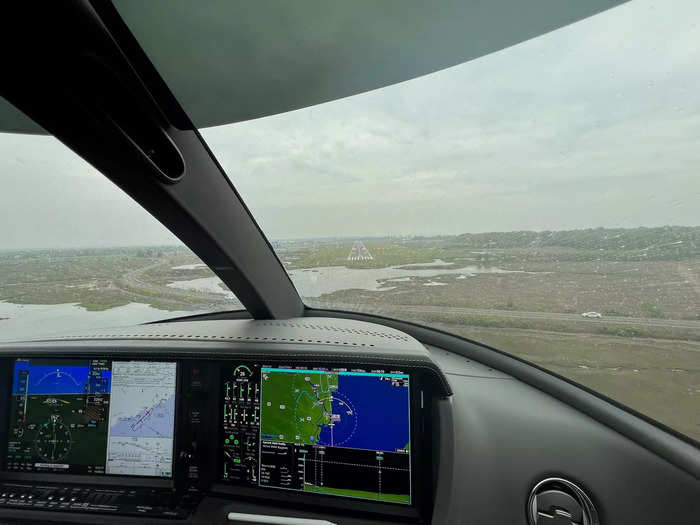
Taylor Rains/Insider
According to the CEO, the smooth ride is due to the turbulence suppressors on the tail.
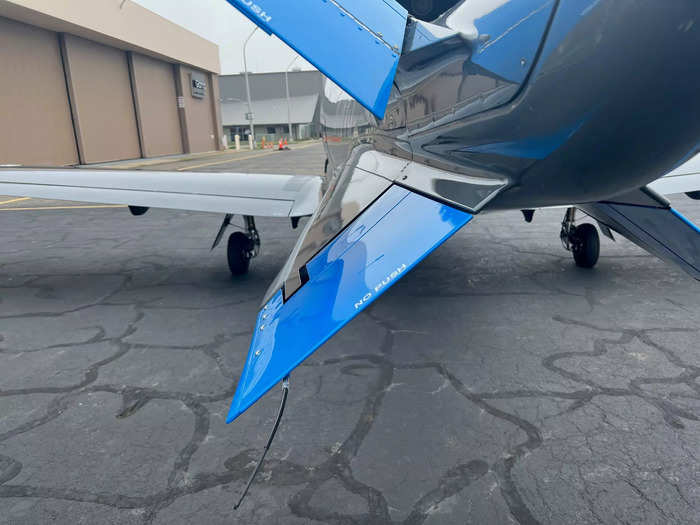
Taylor Rains/Insider
He further explained that many of his clients have previously been afraid to fly, but the Cirrus' advanced systems and resistance to birds and turbulence make them feel comfortable flying in the jet.

Taylor Rains/Insider
However, if things do go wrong, the plane comes with a parachute system that will help recover the jet and safely lower it to the ground.
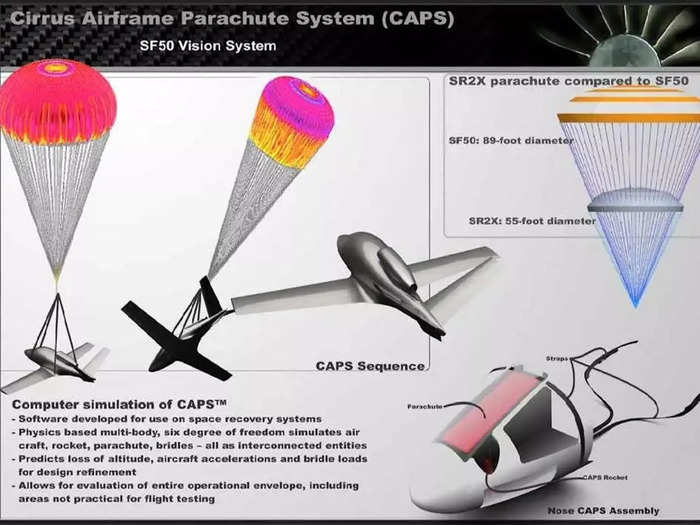
Cirrus Aircraft
A red handle located on the ceiling of the Cirrus Vision Jet deploys the parachute. According to a Cirrus pilot website, the parachute has been deployed over 100 times and saved more than 200 people.
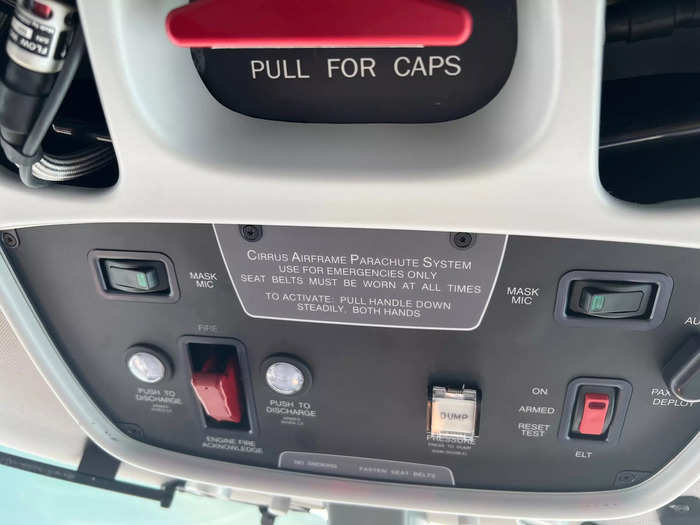
Taylor Rains/Insider
In addition to the parachute, Cirrus has also incorporated an auto-land function for emergency situations. The feature is activated by pressing a red button on the ceiling.
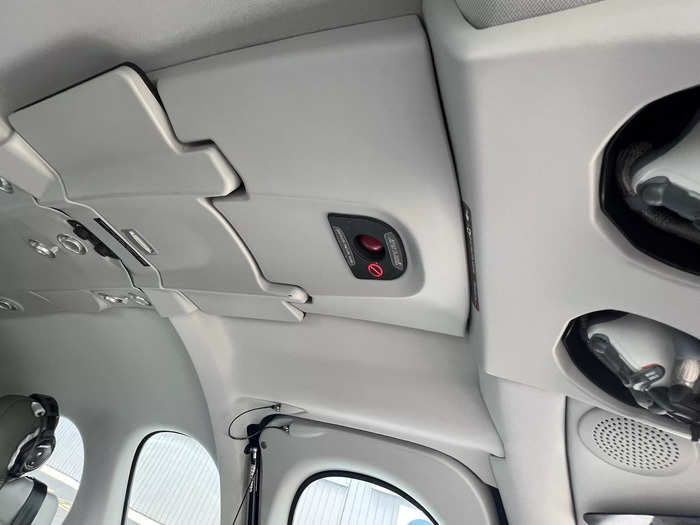
Taylor Rains/Insider
As far as the passenger experience, VeriJet's Cirrus Vision SF50 can carry seven people, including six passengers and one pilot.
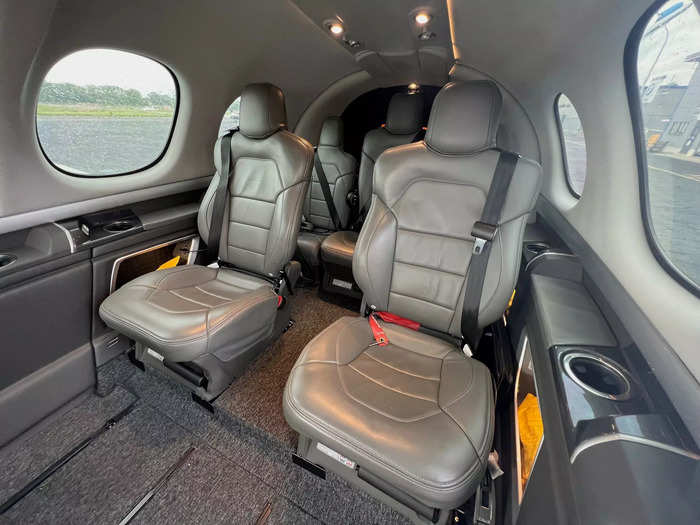
Taylor Rains/Insider
One person could sit at the controls in the front…
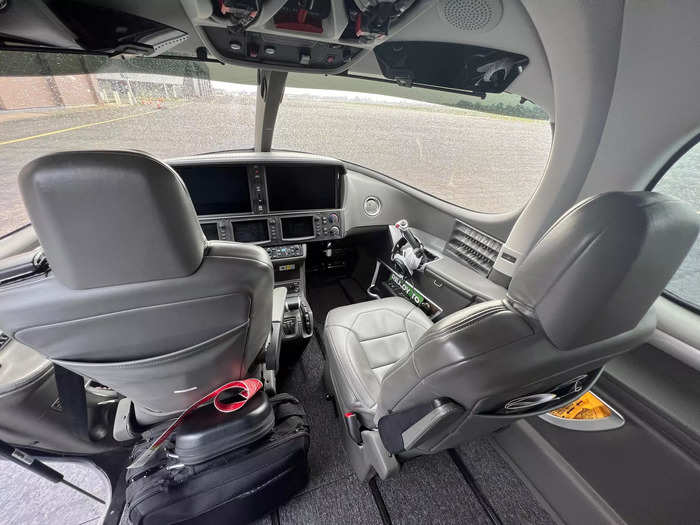
Taylor Rains/Insider
…while up to five can sit behind. Two seats are positioned in the middle of the jet, and a row of three is in the far back.
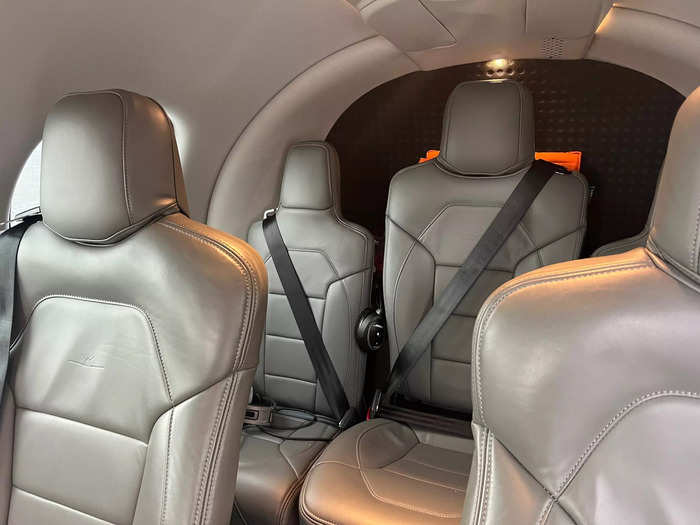
Taylor Rains/Insider
While the back row does not offer recline, the two middle seats can lay nearly fully flat.
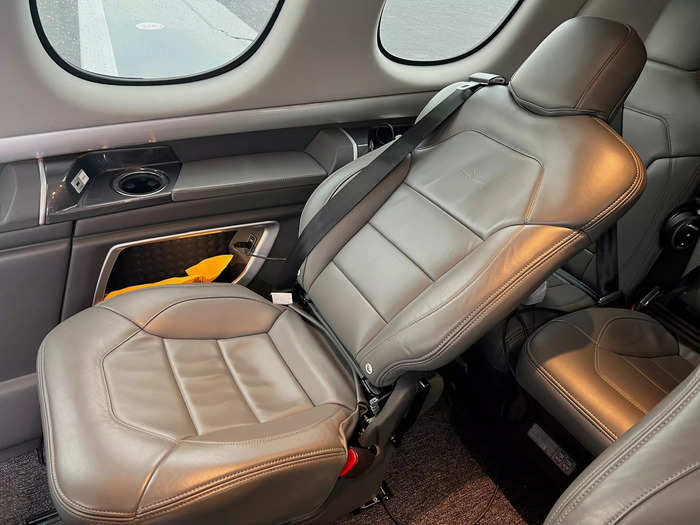
Taylor Rains/Insider
They also offer plenty of legroom.
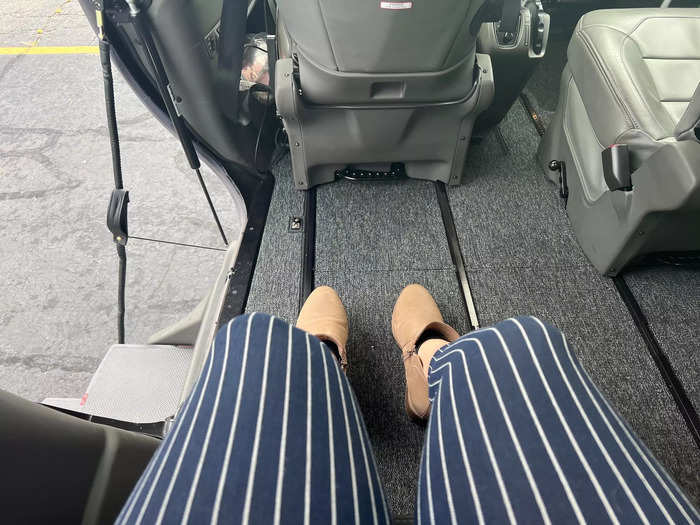
Taylor Rains/Insider
However, when testing out each seat, I did find that the far left and far right seat in the back row had very minimal legroom, but that may not be a major inconvenience for the short flights.
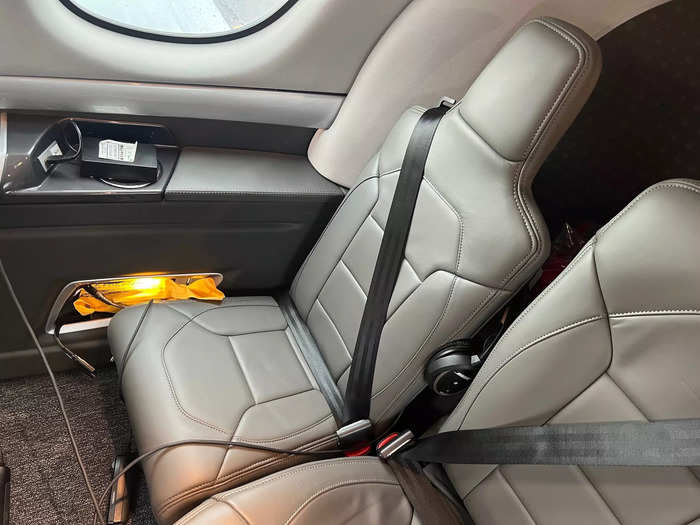
Taylor Rains/Insider
The middle back seat, on the other hand, has plenty of legroom.
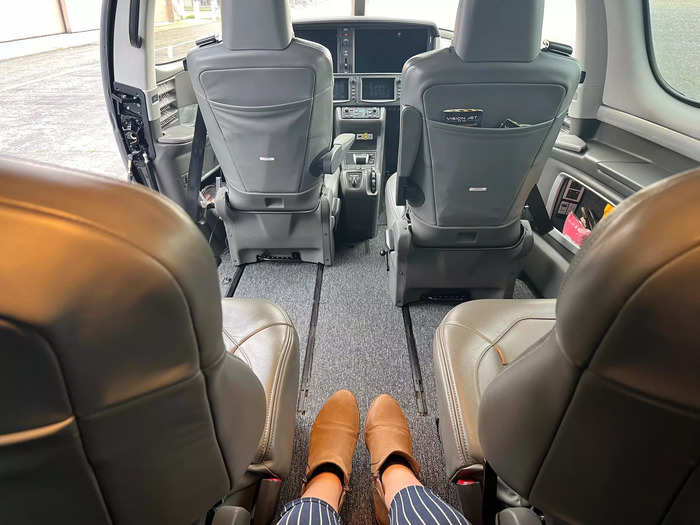
Taylor Rains/Insider
Overall, the seats were very plush and comfortable. The jet also offered other amenities, like universal power ports…
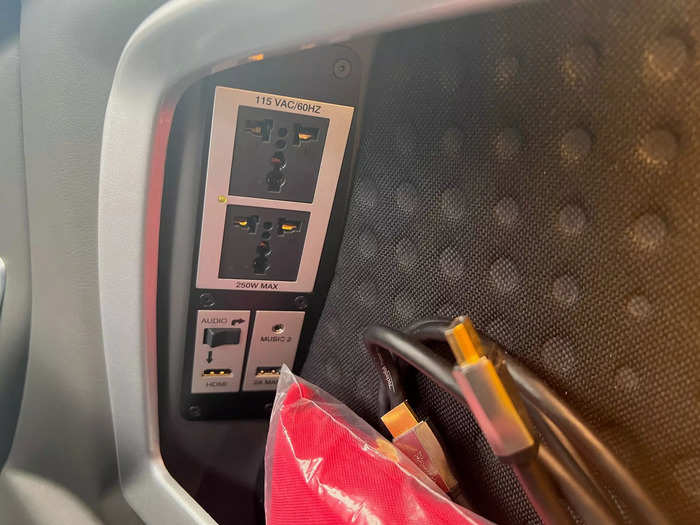
Taylor Rains/Insider
…seatback pockets…
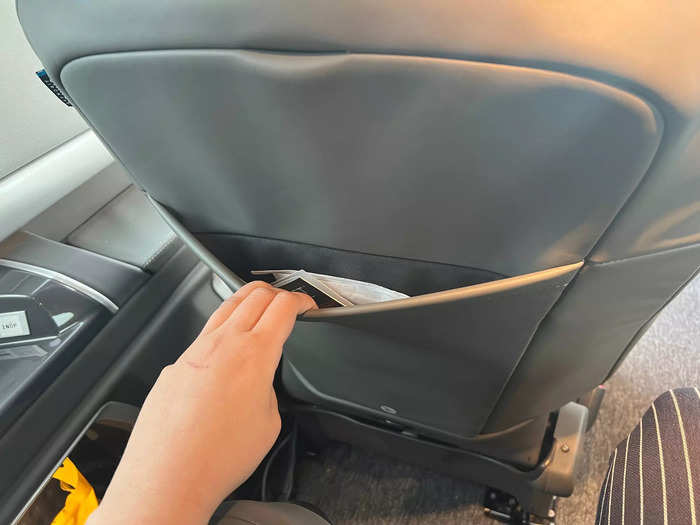
Taylor Rains/Insider
...USB ports and cupholders...
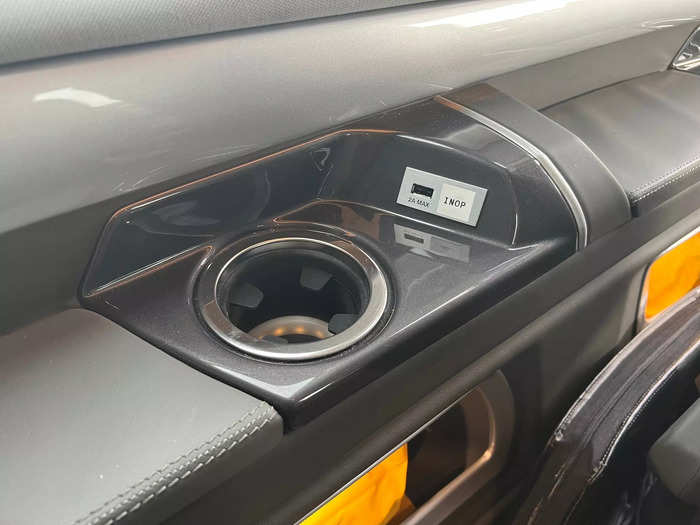
Taylor Rains/Insider
...lights and air conditioning...
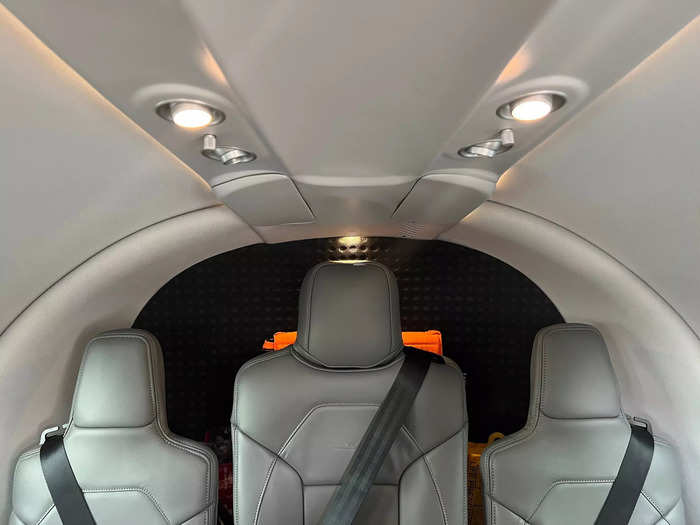
Taylor Rains/Insider
…and headsets.

Taylor Rains/Insider
READ MORE ARTICLES ON
Popular Right Now
Popular Keywords
Advertisement